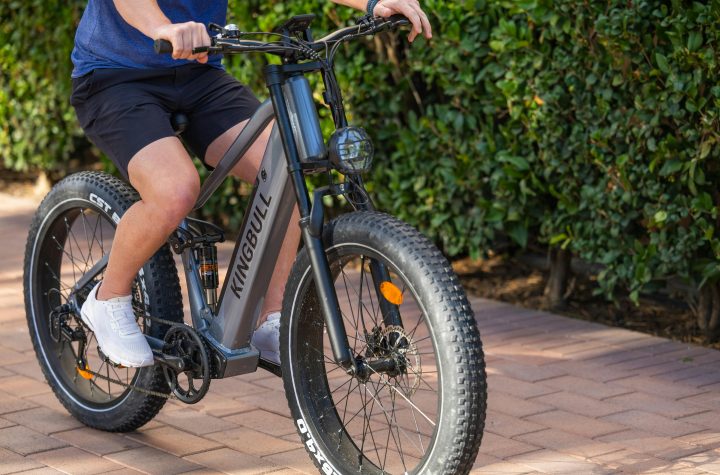

In the realm of professional sports, the evolution of technology has profoundly impacted the way athletes train, compete, and even recover. Modern equipment not only enhances performance but also ensures accuracy and safety in various sports disciplines. This article delves into five cutting-edge pieces of equipment that have revolutionized professional sports.
1. Radar Gun
The radar gun is an essential tool in modern baseball, used extensively by coaches, scouts, and players to measure the speed of pitches and batted balls.
This device emits a radio wave that bounces off the moving ball, allowing it to calculate the speed accurately.
The use of it goes beyond just recording fastball velocities. It helps in analyzing a pitcher’s mechanics, understanding the effectiveness of different pitches, and tailoring training programs to improve arm strength and pitch speed. Additionally, batters can benefit from knowing the exit velocity of their hits, helping them refine their swings for better contact and power.
For scouts and analysts, radar guns provide critical data that influences decisions during player evaluations and draft selections. This precision tool has become indispensable in the pursuit of excellence in baseball.
2. Wearable Fitness Trackers
Wearable fitness trackers have become ubiquitous in the world of professional sports. These devices monitor a variety of physiological metrics, including heart rate, sleep patterns, and physical activity levels. Advanced models can even track specific movements and biometrics tailored to particular sports.
For athletes, fitness trackers offer real-time feedback on their performance and recovery. Coaches and medical staff use the collected data to optimize training regimens, prevent overtraining, and manage injuries. By analyzing these metrics, teams can make informed decisions to enhance player health and performance, ultimately leading to better results on the field or court.
In sports like basketball and football, where endurance and peak physical condition are critical, the insights provided by fitness trackers are invaluable. They help in fine-tuning conditioning programs and ensuring athletes are in their best shape during crucial moments.
3. Video Analysis Software
Video analysis software has transformed the way athletes and coaches approach training and strategy. This technology allows for detailed breakdowns of movements, techniques, and game situations. By reviewing footage frame-by-frame, coaches can identify areas of improvement and devise strategies to exploit opponents’ weaknesses.
In sports such as soccer, video analysis is crucial for understanding team dynamics, positioning, and individual player contributions. Coaches can illustrate tactical adjustments and provide visual feedback that is much more impactful than verbal instructions alone.
For individual sports like tennis or golf, video analysis helps athletes perfect their form and technique. By comparing their movements to those of top performers, athletes can make precise adjustments that enhance their efficiency and effectiveness.
4. Advanced Recovery Equipment
Recovery is a critical aspect of an athlete’s regimen, and modern equipment has significantly improved how athletes recuperate from strenuous activities. Devices such as cryotherapy chambers, pneumatic compression boots, and infrared saunas are now commonplace in professional sports.
Cryotherapy involves exposing the body to extremely cold temperatures for short periods, reducing inflammation and speeding up recovery. Pneumatic compression boots use controlled air pressure to massage and stimulate blood flow, aiding in muscle recovery and reducing soreness.
Infrared saunas penetrate deeper into the body’s tissues compared to traditional saunas, promoting detoxification and muscle relaxation. These recovery tools enable athletes to maintain peak performance levels and reduce the risk of injury.
5. Smart Training Equipment
Smart training equipment encompasses a range of devices embedded with sensors and connected to the internet, providing real-time data and feedback during workouts. Examples include smart treadmills, connected rowing machines, and intelligent weightlifting systems.
These devices track performance metrics such as speed, distance, heart rate, and power output, allowing athletes to monitor their progress and adjust their training accordingly. In team sports, smart training equipment helps in designing drills that target specific skills and fitness components, ensuring that each session is highly productive.
The integration of artificial intelligence in these devices further enhances their utility. AI-driven platforms can create personalized training plans, simulate game scenarios, and even predict injury risks based on an athlete’s data.
Conclusion
The integration of modern equipment in professional sports has revolutionized the way athletes train, compete, and recover. From the precision of a radar gun for baseball to the comprehensive data provided by wearable fitness trackers and smart training equipment, technology continues to push the boundaries of athletic performance.
.





More Stories
How Cycling Helps With Weight Loss
Your Basic Guide to Buying From a New Boat Sales Service
Where to Get Ski and Snowboard Rentals